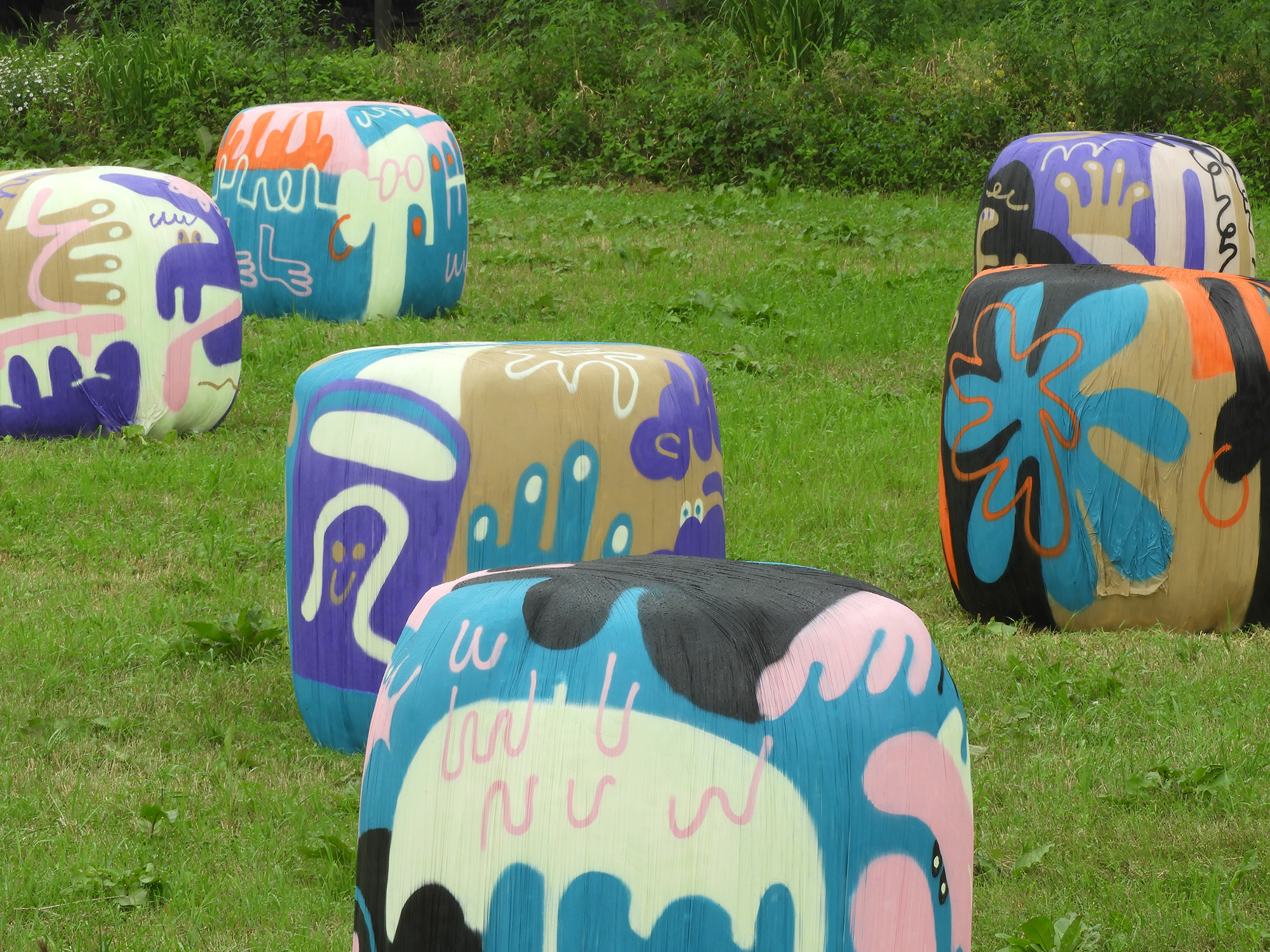DODDODO
If you look out of from your car in Nasu, you will often see a herd of mysterious large white lumps. They are called silage, fodder wrapped in special plastic wrap, made just in the summer and fed to the cows by fermenting the contents until winter. They can be found lying around in the fields, or neatly lined up in rows. They can be bright white or rotting in the shade of a dimly lit tree. Their expressions, which vary from field to field, are somewhat lifelike and charming. Even when a strong wind blows or you push them as hard as you can, they stand there, unmoving and ready to go.
"DODDODO DODO-DO DODO-DO DODO."
The words were vaguely familiar, but seeing them for the first time in a long time, I imagined a scene of these heavy white lumps moving slowly around like a herd of animals on a great migration.
This is the onomatopoeia that Kenji Miyazawa used to describe the sound of the wind at the beginning of "Kaze no Matasaburo. He often uses "wind" as a role to create an unusual change in a scene. Wherever "Kaze no Matasaburo," the son of the wind god, goes, the wind always blows and changes the atmosphere of the place.
In the same way, I wanted to create an something unusual in the scenery of a long, quiet drive in Nasu. I wanted to leave a kind of uneasiness in this quiet town. The white lumps that are so foreign to me are familiar to the locals. I asked the dairy farmer if I could paint on them.
I read "Kaze no Matasaburo" after seeing shadow pictures based on the book at the Seiji Fujishiro Art Museum, which I visited during my stay. The story begins with Matasaburo's arrival in the village on September 1, the day of a typhoon, and ends with his departure again on September 12. I did not want to think that it was just a coincidence that my stay in Nasu coincided with this period.
----------
RELATED INFORMATION
ART369 PROJECT
https://keeenue.com/blogs/news/art369-project








